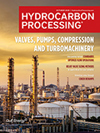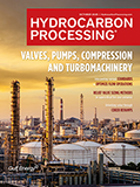Process Control
Industry Perspectives: The latest advancements in refining/petrochemical technologies on display
From September 25–26, Hydrocarbon Processing will bring its International Refining and Petrochemical Conference (IRPC) back to the US.
Digital: Improve chemical production with the IoT
If chemical companies want to remain competitive and move forward in a changing world, they must rapidly adopt innovative technologies.
Editorial Comment: Celebrating the latest advancements in HPI technology
At the end of this month, <i>Hydrocarbon Processing</i> will honor the latest technological advances in the hydrocarbon processing industry (HPI) at an awards gala.
Attaining TCO nirvana with outcome-based services
The industrial manufacturing sector is grappling with an unprecedented number of challenges.
Adapting instrumentation to the needs of refineries
Oil refineries provide a smorgasbord of challenging applications for instrumentation engineers and technicians.
Online monitoring of H2O using tunable diode laser absorption spectroscopy
Raw wellhead natural gas is a complex mixture of methane (CH<sub>4</sub>), hydrocarbon condensates, natural gas liquids (NGL), water, contaminants, hydrogen sulfide (H<sub>2</sub>S), carbon dioxide (CO<sub>2</sub>), nitrogen, mercury and other compounds.
Hydrocarbon Processing Awards
<i>Hydrocarbon Processing</i>, the downstream processing sector’s leading technical publication, has announced the finalists for its second annual awards.
Six considerations for turbomachinery control upgrades
Increasing competitive pressures in process industries, including oil and gas, are driving dramatic changes in the operational needs of process plants, utilities and pipelines.
Improving certainty in uncertain times by building an IIoT-ready plant
Historical statistics indicate that 25% of projects have budget overruns and a further 50% have schedule slippage.
Industrial IoT technologies are revolutionizing oil and gas supply chains
Over the past few decades, the world has seen a surge in demand for oil and gas, and global markets have responded to meet these growing energy needs.

- Asian gasoline margin spikes to highest since August 2023 11/14
- Lukoil-Moldova grants free use of airport fuel terminal to government amid U.S. sanctions 11/14
- Croatia rejects Russian vacuum gasoil cargo after U.S. sanctions 11/14
- Bulgaria wins UK sanctions reprieve on refinery, petrol stations 11/14
- China's Sinochem shuts one crude unit at Quanzhou after fire 11/14
- Enbridge approves $1.4-B project to boost Canadian oil flows to U.S. refiners 11/14




